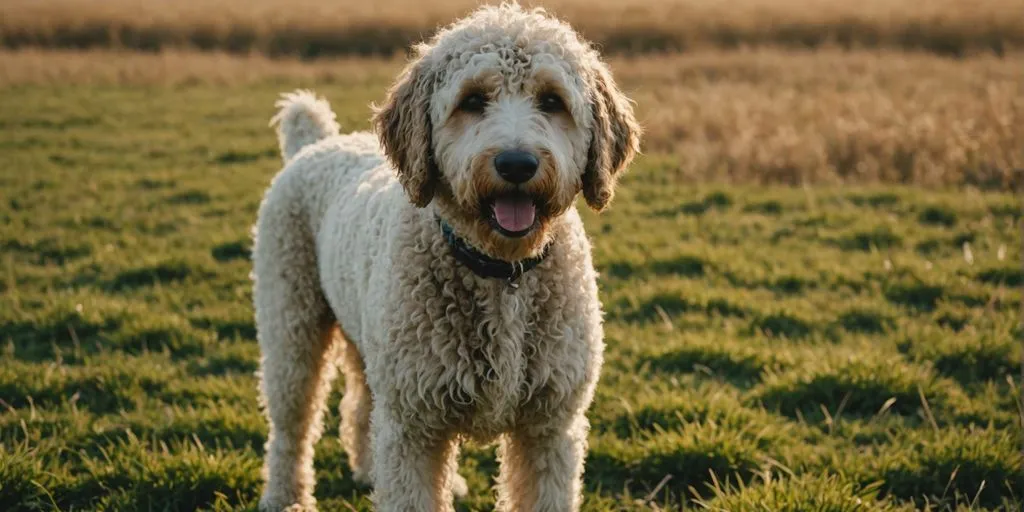Discover how big do pyredoodles get. Growth patterns, size range, and health considerations of Pyredoodles in this comprehensive guide.
Understanding how big these dogs can get is important for potential owners. This article explores their growth patterns, adult size, and factors that influence their development.
- Key Takeaways
- Factors Influencing Growth
- Tracking Your Pyredoodle’s Growth
- Growth Stages of Pyredoodles
- Height Expectations
- Weight Expectations
- Variations in Size
- Great Pyrenees Influence
- Poodle Influence
- First-Generation vs. Second-Generation Pyredoodles
- Space Requirements
- Exercise Needs
- Adaptability to Different Living Environments
- Nutritional Needs
- Common Growth-Related Health Issues
- Regular Veterinary Check-Ups
- Using Growth Calculators
- Consulting with Breeders
- Monitoring Developmental Milestones
Key Takeaways
- Pyredoodles are a crossbreed, often resulting in varied sizes and appearances.
- Adult Pyredoodles typically range from 22 to 32 inches in height and weigh between 85 to 100 pounds.
- The size of a Pyredoodle is influenced by whether they are first-generation or second-generation dogs.
- Both Great Pyrenees and Poodle genetics play a significant role in determining the size of a Pyredoodle.
- Proper nutrition, regular vet check-ups, and monitoring growth stages are crucial for a healthy Pyredoodle.
Understanding Pyredoodle Growth Patterns
Factors Influencing Growth
When it comes to Pyredoodle growth, several factors come into play. Genetics is a major player, especially since this is a relatively new crossbreed.
The size of the parent breeds, Great Pyrenees and Poodles, can greatly influence how big your Pyredoodle will get. Nutrition and overall health also play crucial roles.
A well-balanced diet and regular vet check-ups can help ensure your Pyredoodle grows at a healthy rate.
Tracking Your Pyredoodle’s Growth
Keeping an eye on your Pyredoodle’s growth is essential. You can use growth charts and calculators to get an idea of how big your doodle might become. Regularly weighing and measuring your pup can help you track their progress.
Regularly weighing and measuring is especially important because Pyredoodles are a relatively new breed, and their growth patterns can vary.
Growth Stages of Pyredoodles
Pyredoodles go through several growth stages before they reach their full size. Initially, they grow rapidly as puppies.
This fast growth phase usually lasts until they are about six months old. After that, their growth rate slows down, but they continue to grow until they are about 18 to 24 months old.
It is important to note that while they may stop growing in height, they might still fill out and gain muscle mass after this period.
Understanding these growth stages can help you better care for your Pyredoodle and ensure they develop into healthy adults.
Typical Size Range of Adult Pyredoodles
When it comes to the size ranges of adult Pyredoodles, they can vary quite a bit. This is mainly due to the influence of their parent breeds, the Great Pyrenees and the Standard Poodle. Generally, you can expect a medium to large dog.
Height Expectations
Adult Pyredoodles typically stand between 22 to 32 inches tall at the shoulder. It makes them quite a bit taller than many other Doodle breeds, such as the Bernedoodle or the Mini Bernedoodle.
Weight Expectations
In terms of weight, adult Pyredoodles usually weigh between 85 to 100 pounds. However, some can be lighter or heavier depending on their genetics and diet.
This weight range is similar to that of Standard Bernedoodles but much heavier than Miniature Poodles or Tiny Bernedoodles.
Variations in Size
The size of a Pyredoodle can also vary based on whether they are a first-generation or second-generation mix. First-generation Pyredoodles tend to be more consistent in size, while second-generation mixes can show more variation.
These sizes are similar to the different size variations that exist in other breeds, like the Moyen Poodle or the Micro Mini Bernedoodle.
Influence of Parent Breeds on Pyredoodle Size
When it comes to understanding the size of a Pyredoodle, the influence of the parent breeds is significant. The Great Pyrenees and the Poodle each contribute unique traits that can affect the overall size of the Pyredoodle.
Because doodles can inherit any trait from either parent, their weight, height, temperament, and coat type may vary widely.
Great Pyrenees Influence
The Great Pyrenees is known for its large size and sturdy build. When a Pyredoodle inherits more traits from the Great Pyrenees, you can expect a larger dog. These dogs often have a more robust frame and can weigh more.
Poodle Influence
On the other hand, the Poodle contributes to a more refined and sometimes smaller build. Poodles come in various sizes, and this can lead to a Pyredoodle that is medium to large.
The Poodle’s influence can also result in a curly, low-shedding coat.
First-Generation vs. Second-Generation Pyredoodles
The generation of the Pyredoodle also plays a role in its size. An F1 Pyredoodle, which is a first-generation cross between a Great Pyrenees and a Poodle, typically has a 50/50 mix of traits from both parent breeds.
An F1B Pyredoodle, which is a backcross with a Poodle, may have a higher percentage of Poodle traits, leading to a smaller size.
Understanding the size of the parent dogs can help predict the potential size of your Pyredoodle. Always consult with a reputable dog breeder to get the most accurate information about your puppy’s potential size.
Learn about Grooming your pyredoodle at: How to Groom a Pyredoodle?
How Big Do Pyredoodles Get: Living with a Large Pyredoodle
Living with a large Pyredoodle can be a rewarding experience. Despite their size, these gentle giants are known for their calm demeanor and love for family time.
They thrive on human interaction and can suffer from separation anxiety if left alone for too long. Therefore, they are best suited for households where someone is often at home to keep them company.
Space Requirements
While Pyredoodles do not need as much space as smaller yet bouncier Doodles, it is a good idea to factor their size in when deciding whether or not to adopt one of these beautiful dogs.
They tend to do best in homes with a fenced-in backyard that accommodates their large size. However, they can adapt to living in apartments if given enough exercise during the day.
Exercise Needs
Pyredoodles require regular exercise to stay healthy and happy. Daily walks and playtime in a secure area are essential.
They enjoy activities that engage both their minds and bodies, such as puzzle toys and agility training. Keeping them active helps prevent boredom and destructive behavior.
Adaptability to Different Living Environments
This breed is quite adaptable and can thrive in various living environments. Their adaptability to apartment living and spacious homes makes them versatile companions.
Whether you live in a city apartment or a house with a large yard, a Pyredoodle can fit into your lifestyle as long as your exercise and companionship needs are met.
Pyredoodles are gentle giants with patient, loving hearts. They are as happy spending time alone as they are with their family.
While they do not need as much space as smaller yet bouncier Doodles, it is a good idea to factor their size in when deciding whether or not to adopt one of these beautiful dogs.
Health Considerations for Growing Pyredoodles
Nutritional Needs
Ensuring your Pyredoodle gets the right nutrition is crucial for their growth and overall health. A balanced diet helps prevent common health issues and supports joint health. I recommend consulting with your vet to choose the best food for your Pyredoodle’s specific needs.
Common Growth-Related Health Issues
Pyredoodles are generally healthy dogs, but they are prone to certain health problems, such as hip dysplasia, bloat, and ear infections. Regular check-ups and proactive care can help manage these issues. Here are some common health concerns:
- Hip Dysplasia: This joint issue is common in larger breeds and can cause discomfort and mobility problems.
- Bloat: This serious condition can be life-threatening and requires immediate veterinary attention.
- Ear Infections: Due to their floppy ears, Pyredoodles are more susceptible to ear infections. Regular cleaning can help prevent this.
Regular Veterinary Check-Ups
Regular vet visits are essential to monitor your Pyredoodle’s health and catch any potential issues early. Your vet can guide you on vaccinations, dental care, and other health maintenance practices.
Routine check-ups are a key part of keeping your Pyredoodle healthy and happy. Keeping up with your Pyredoodle’s health needs can prevent many common issues and ensure they grow into a strong, healthy adult.
Predicting Your Pyredoodle’s Adult Size
When it comes to predicting your Pyredoodle’s adult size, there are a few methods you can use to get a good estimate.
Understanding your Pyredoodle’s potential size is important for planning their living space and care needs.
Using Growth Calculators
One of the easiest ways to predict your Pyredoodle’s adult weight and height is by using a growth calculator. These tools can give you a rough estimate based on your puppy’s current age and weight.
For example, if your Pyredoodle weighs 25 pounds at 23 weeks, you can multiply that by two to get an estimated adult weight of around 50 pounds.
Consulting with Breeders
Breeders can provide valuable insights into your Pyredoodle’s future size. They have experience with the breed and can often give you a good idea of what to expect.
They may also have information on the size of the puppy’s parents, which can be a strong indicator of the adult size.
Monitoring Developmental Milestones
Keeping track of your Pyredoodle’s growth stages can also help you predict their adult size. Most Pyredoodles reach half their full weight by 5 to 6 months and their full adult weight by 24 months.
Monitoring these milestones can give you a clearer picture of how big your dog will get.
Remember, these are just estimates. Genetics can be unpredictable, and your Pyredoodle’s size may vary. However, these methods can give you a good starting point for planning your dog’s future.
Conclusion
In conclusion, Pyredoodles are a unique and lovable breed that combines the best traits of Poodles and Great Pyrenees. Their size can vary, but they generally grow into medium to large dogs.
While predicting their exact size can be tricky, keeping an eye on their growth and using tools like puppy growth calculators can help. These gentle giants are adaptable to different living spaces and make wonderful companions due to their affectionate and intelligent nature.
Whether you live in an apartment or a house, a Pyredoodle can be a great addition to your family. We hope this guide has provided you with valuable insights into the growth and size of Pyredoodles.
If you have a Pyredoodle, feel free to share your experiences in the comments below!
Frequently Asked Questions
How big do Pyredoodles usually get?
Adult Pyredoodles can be quite large, typically standing between 22 to 32 inches tall and weighing around 85 to 100 pounds.
What factors affect the size of a Pyredoodle?
The size of a Pyredoodle can be influenced by the genetics of its parents, especially whether it takes after the Great Pyrenees or the Poodle more.
Are Pyredoodles good for apartment living?
Yes, Pyredoodles can adapt to apartment living, but they do need regular exercise and mental stimulation to stay happy and healthy.
What is the difference between first-generation and second-generation Pyredoodles?
First-generation Pyredoodles are direct crosses between a Great Pyrenees and a Poodle, while second-generation Pyredoodles come from two Pyredoodle parents, leading to more consistent traits.
How can I predict my Pyredoodle’s adult size?
You can use growth calculators, consult with breeders, and monitor your puppy’s growth milestones to get an idea of their adult size.
What are the exercise needs of a Pyredoodle?
Pyredoodles need regular exercise, including daily walks and playtime, to keep them physically and mentally fit.










